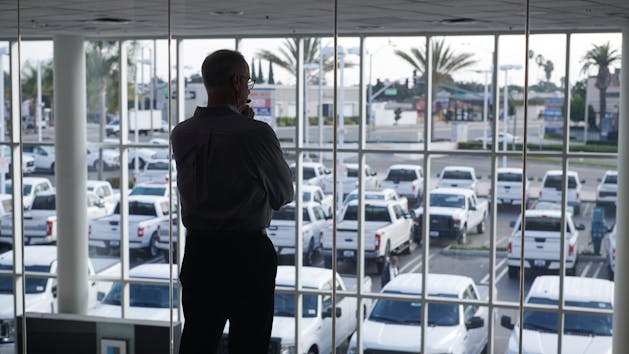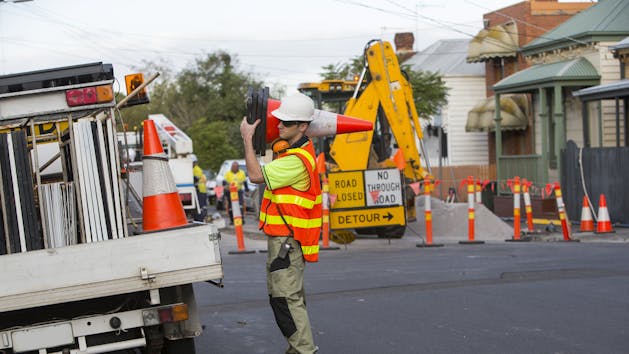Learn about the top 3 Ways Telematics Improves Law Enforcement Fleet Management by downloading our free ebook.
Law Enforcement Fleets Get Backup From Telematics
From patrol cars to pursuit vehicles to interceptor SUVs, law enforcement agencies have demanding expectations for their fleets. They’re frequently driven under incredibly harsh conditions and often in potentially dangerous circumstances, much more so than the average daily driver. These fleet vehicles also need to accommodate large amounts of police equipment, be durable enough to perform reliably through long patrol shifts in challenging situations, and respond quickly and effectively in pursuit.
In addition, law enforcement agencies are being bombarded with a plethora of new vehicle models and technology options, including next-generation engine technology, bigger and more versatile platforms, semi-autonomous and robotic cars, and built-in WiFi connectivity, just to name a few.
To help them address these challenges both in the near and long term, more law enforcement agencies are turning to fleet management solutions. The right telematics technology can help protect both officers and the public they serve in three critical ways:
1. Improving safety and reducing risk
The safety of officers and the public they serve is a top priority for every law enforcement agency. In 2018, 50 law enforcement officers died from traffic-related incidents, according to the year-end report from The National Law Enforcement Officers Memorial Fund. For most of the current decade, the average of traffic-related deaths (55) has been close to the average of firearm-related deaths (54).1
An added risk is that being behind the wheel of a police vehicle also means having to multitask, including answering dispatcher calls, typing names, license plate numbers or other search queries on dash- or front-seat-mounted laptops and keeping track of speeding vehicles or other disturbances in their vicinity.2
The right fleet management solution can support police officers as they navigate these daily challenges, helping to meet a number of critical safety standards by:
- Monitoring vehicle speed and location to reduce unnecessary speeding
- Delivering a clear picture of driver behavior to identify hard braking and acceleration incidents
- Providing customized behavior data that can be used to coach officers on safer driving techniques
- Tracking and measuring seatbelt use and integrating that information in safety programs
- Pinpointing exact vehicle location to send help in emergency situations
2. Controlling costs and stretching limited budgets
Law enforcement vehicles are subject to wear and tear far above the norm, which can require costly maintenance, repairs and part replacement. Budget-strapped police forces must get the maximum number of miles and service out of each patrol car, but it shouldn’t be at the expense of those operating the vehicles, often at high speeds.
Telematics can help increase efficiency while lowering operational expenses by enabling fleet managers to:
- Decrease fuel usage—the biggest expenses for any fleet—by reducing idle time and speeding while identifying unauthorized vehicle usage and verifying fuel expenditures to help reduce fraud
- Plan and track preventative maintenance by accessing engine diagnostic data to streamline the maintenance process and better control associated costs, while eliminating paperwork and digitizing vehicle service tracking
- Improve dispatching decisions to reduce mileage (and excessive vehicle wear and tear) with near-real time maps of all vehicle locations point-to-point driving directions
- Potentially lower insurance premiums by integrating telematics data into a fleet safety program
3. Enhancing fleet utilization and operational efficiency
A Frost & Sullivan study found that fleet operators who maximize the potential of a fleet management solution can enhance vehicle utilization by up to 15%–20%.3 Fleet management solutions provide real-time vehicle stats and usage data that allow fleet managers to:
- Identify key metrics such as miles traveled and hours of use, to establish a baseline and determine qualifications for to improve utilization
- Analyze job history to determine accurate vehicle utilization and compare across the entire fleet to help meet benchmarks
- Streamline asset tracking to better manage inventory and track in-vehicle equipment including computers, phones, software, printers and radios
- Be agile enough to address emergency and last-minute needs by changing vehicle routes at a moment’s notice based on location, job assignments and miles driven
- Integrate with navigation tools, weather and traffic data to efficiently route vehicles in the midst of fast-changing conditions
4. Match the right system to your needs
Make sure you select a telematics system that helps you meet the specific needs of your law enforcement agency today—and is nimble enough to help you adapt to tomorrow’s challenges.
Look for a solution that offers:
- Access from virtually anywhere on any device at any time
- Detailed maps tracking vehicles, officers and equipment
- Easy-to-use dashboards with up-to-the-minute fleet analytics
- Coaching modules to support safe driving behaviors
Download our eBook 3 Ways Telematics Improves Law Enforcement Fleet Management to learn more about how the right fleet management system can help you protect your officers, improve your fleet operations and rein in costs.
Sources
2 https://www.government-fleet.com/159907/a-sure-bet-for-reducing-distracted-police-driving
3 Custom Research from Frost & Sullivan LCV Telematics Market. November 2015
Find out how our platform gives you the visibility you need to get more done.




